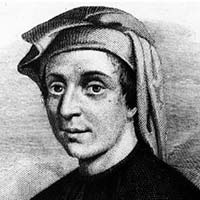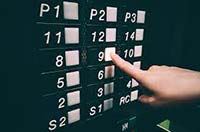Tuesday, 21 November 2023

Numbers
Speaker: Dave Calverley
The guest speaker at U3A Todmorden members meeting on Thursday, 16th November was Dave Calverley, a retired teacher and lecturer, with a talk entitled 'Numbers'.
After introducing himself, Dave told us that in his teaching career in numbers and other aspects of maths he would have had the time to involve his classes with exercises to involve and engage them in learning the subject to a high standard.
Our members found out what he meant, as his presentation involved much audience participation throughout.
Our first test was to count from the number one upwards on a slide with fifty or more others for around thirty seconds. Most of the audience had counted around eight to ten. Dave said that he expected this, as most people have what is known as a 'digit span' of seven numbers. We then joined in a game involving a number from one to ten. With five stages of adding, multiplying and subtraction of other numbers we ended up with the first number we thought of.
 This was one of the discoveries from a man called Leonardo of Pisa, also known as Fibonacci, a mathematician in the thirteenth century and was familiar to a fair proportion of us who have heard of the Fibonacci Sequence. Examples of the sequence appear in nature, art and architecture dating back thousands of years, such as the Parthenon and the Taj Mahal. He was also instrumental in converting much of Europe and other parts of the world to adopt the Indian numerals of 1 to 9, replacing the still used up to then Roman numerals.
This was one of the discoveries from a man called Leonardo of Pisa, also known as Fibonacci, a mathematician in the thirteenth century and was familiar to a fair proportion of us who have heard of the Fibonacci Sequence. Examples of the sequence appear in nature, art and architecture dating back thousands of years, such as the Parthenon and the Taj Mahal. He was also instrumental in converting much of Europe and other parts of the world to adopt the Indian numerals of 1 to 9, replacing the still used up to then Roman numerals.
Dave described the calculations made by Fibonacci which brought about his identifying the sequence. A pair of rabbits in a field produced another pair. After a month, the original pair and their offspring produced another pair each. None of these imaginary rabbits died, and so each pair would keep reproducing, and the total number increased exponentially. The totals each month, after some time, included the same three numbers: 168.
The number 1.61803 is better known as the 'Golden Ratio' and frequently appears in art, including classical music, architecture, and natural sciences.
Fibonacci sequence is widely used today in engineering applications including computer data structures, sorting algorithms, architectural and financial engineering, and audio compression.
Human beings are subject to the sequence too; each have, or at least have started off with, one thumb on each hand, two bones in each thumb, three bones in each finger, five digits on each hand and eight fingers in total. (1, 2, 3, 5, 8 )
There was more to see though, as Dave described how to use the first several numbers in the sequence: zero, one, one, two, three, five, eight and thirteen, creating a spiral shape. This shape would continue to grow and develop as more numbers from the sequence were added, and will continue to do so, as all of our imaginary pairs of sheep are still alive. But as well as the perhaps overwhelming amount of numbers produced in the sequence, there are other aspects to the spiral that it produces. The shapes and curves of the spiral appears frequently in the plant life of our planet. Dave showed examples in pictures of cabbage and sunflowers and told us that the same spiral shapes have appeared in pictures of the galaxies in outer space.
Moving away from Fibonacci, Dave had another slightly mind boggling story lined up for us , again from many years ago, about a board game. The inventor of chess presented the game to his king, who asked what reward he could give in return. The inventor, sometimes referred to as 'The Wise Man' asked for a grain of rice on the first of the sixty four squares on the board, and for twice that amount the next day, and the same thing for the whole of the sixty four squares on the board. Again, Dave involved the audience by asking us to suggest how many grains of rice might be on the 64th square of the board at the end of the process? After hearing our, perhaps, tentative suggestions he provided the answer. Basing it on the length of all the pieces of rice on the 64th being laid end to end, it would take over four and a half light years to travel the distance. As to the actual number of grains of rice, there would be over two billion times as many as those on the first 32 squares of the chessboard.
His next topic was more familiar to us, mentioning the Egyptian pyramids and Pythagoras, preceded by a live demonstration, with the help of one or two of our members and a piece of rope. With three sides of the rope measuring three, four and five feet, a right angled triangle was made, as first demonstrated by Pythagoras in the fifth or sixth century BCE.
The base of the Great Pyramid of Giza was laid out by using this type of triangle for its four sides, which were built to a height of one hundred and fifty metres. The measurements of the longest and shortest sides differed only by one and a half metres, which showed how accurately the pyramid had been planned and built, along with the effectiveness of using the 'three-four-five' triangle technique.
We heard about another aspect of numbers and symbols - the 'equals' sign. Although mathematics and numbers have featured in our lives for thousands of years, the now familiar equals sign started being used around seven hundred years ago. Up until then, words signifying or meaning equality such as 'aequalis', 'aqueantor', or the shortened 'aeq' would be used.
The actual equals sign was invented by a man called Robert Recorde, who went to Oxford University at the age of 14, taught maths at Oxford seven years later, and also obtained a degree in medicine. When asked about how he came to invent the symbol he said 'No two things can be more similar'. Robert Recorde went on to become the comptroller of the Bristol mint, but was accused of treason after refusing to divert money to troops who were dealing with a rebellion in the south west of the country. He survived this incident but had made an enemy, who subsequently made another accusation which led to Recorde being confined to a debtor's prison after losing a libel suit, where he died.
 Dave is a volunteer for the Canal River Trust, working on the Stanage Canal near Huddersfield. It features the longest canal tunnel in England, and members of the public can travel through it. A safety tunnel runs alongside, and there are passages called Davits between the two tunnels. He found that there are two with the number 14. This linked into the subject of lucky and unlucky numbers, and the many superstitions that surround them, other examples such as hotels that don't have a thirteenth floor and not having thirteen people sitting down at the same table.
Dave is a volunteer for the Canal River Trust, working on the Stanage Canal near Huddersfield. It features the longest canal tunnel in England, and members of the public can travel through it. A safety tunnel runs alongside, and there are passages called Davits between the two tunnels. He found that there are two with the number 14. This linked into the subject of lucky and unlucky numbers, and the many superstitions that surround them, other examples such as hotels that don't have a thirteenth floor and not having thirteen people sitting down at the same table.
The presentation concluded with Dave again mentioning the importance and value of encouraging young people to enjoy learning about numbers, before answering questions from the audience and a vote of thanks for his memorable talk.
The next Todmorden U3A Monthly Members Meeting will be on Thursday the 14th of December, open to all fully paid-up members at the Central Methodist Hall. The speaker for this meeting is Roger Browne, who will present 'Tin Pan Alley with A Christmas Feel'
Not yet a member? We're always delighted to welcome new members. Contact details: website at www.u3atod.org.uk or email at info@u3atod.org.uk.
Many thanks to Colin Sanson for this report
Previous U3A reports on the HebWeb - click here

